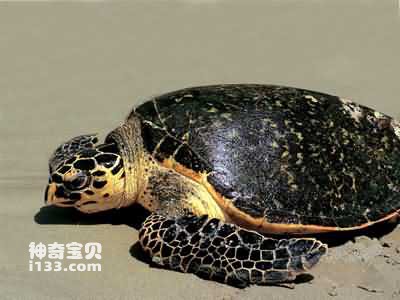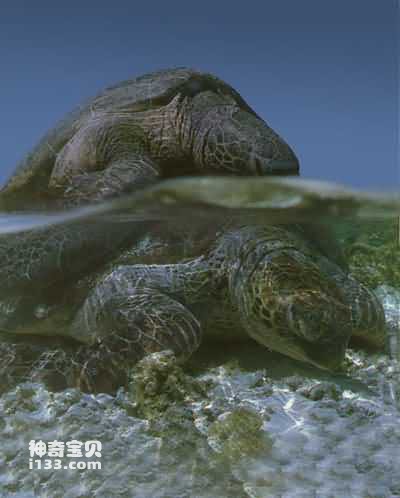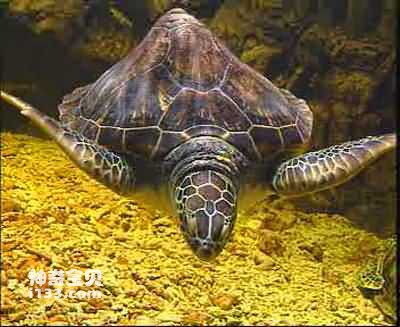Turtle is the general name for marine turtles. There are 5 species of marine turtles living in our country's oceans (there are only 7 species in the world), mainly distributed in the Xisha Islands and the port of Huidong County, Guangdong Province, followed by the coastal areas on the outskirts of Sanya and Lingshui County, Hainan Province. Five species of sea turtles have been recorded in the China Sea: leatherback turtles, sea turtles, flat turtles, hawksbill turtles and olive ridley turtles, all of which are nationally protected animals.

Sea turtles are the largest reptiles in the marine world today. The largest among them is the leatherback turtle. Its maximum body length can reach 2.5 meters and its weight is about 1,000 kilograms. It is called the king of sea turtles.

turtle mating
The ancestors of sea turtles appeared on the earth more than 200 million years ago. The ancient turtles and the arrogant dinosaurs of the Mesozoic era experienced a period of prosperity together. Later, the earth went through great changes, dinosaurs became extinct one after another, and sea turtles also began to decline. However, with the protection of their hard carapace and plastron shell, sea turtles have overcome countless misfortunes brought to them by nature and survived tenaciously. Turtles have trudged through a long historical journey of more than 200 million years, and still survive and reproduce from generation to generation. They are truly ancient, tenacious and precious animals.
Turtles live in tropical and subtropical oceans and feed on fish, shrimp, crabs, and shells. Some species (hawksbill turtles and sea turtles) also eat seaweed.
Every year during the egg-laying season, sea turtles will travel thousands of miles across the ocean to return to their birthplace and lay their eggs on land. The spawning ground must be a beach with fine sand (sand grain diameter is 0.05 mm to 0.2 mm) that cannot be reached by the tide at high tide. The beach is wide and has a gentle slope. There are no large obstacles such as rocks in front of it. It is best to face south.

Turtles lay eggs
Every May. August is their reproductive season. Spawning takes place from dusk to dawn the next day. The turtles that landed with the waves crawled faster at first, then gradually slowed down, pausing from time to time in the middle. When a sea turtle selects a spawning site, it uses its front and rear limbs to push the sand around its body backwards and digs a pit just big enough to accommodate its body - the "body pit", and then uses its hind legs to dig another pit - "Egg pit" o The egg pit is 40 cm to 50 cm deep and 20 cm in diameter. 30 cm, a turtle can lay about 50 to 120 eggs in it. After laying eggs, the sea turtle first uses its hind limbs to cover the eggs with sand, then uses its forelimbs to push the sand in front into the "egg pit" at the rear, and then uses its forelimbs and hind limbs to fill the "egg pit" at the same time. Fill it with sand, and finally climb on top to compact the sand. It takes about 2 hours from landing to returning to the sea. During the process of laying eggs, the turtles' eyes will secrete mucus-like tears. This is a measure the turtles take to protect their eyes after landing on land. There is a gland in the eyelids of sea turtles, the salt gland.
It can excrete excess salt from the body. This is a gland that sea turtles have to adjust the osmotic pressure of body fluids when they inhabit and feed in the sea. Sometimes people see turtles shedding "tears" (mucus), which are actually the turtles expelling excess salt from their bodies.
Sea turtle eggs are similar in size and shape to ping pong balls. The warm sunshine and comfortable sand nest create an ideal hatching bed, and the baby turtles slowly develop and change. The temperature in the sand is 28°C. At 30℃, after about 60 days and nights, the baby turtles will break out of their shells and instinctively crawl into the white-capped sea. He started his difficult life in the cradle of the sea and traveled the ocean following the path taken by his ancestors. After about 7 to 8 years, they reach sexual maturity and begin to have children again. Adult sea turtles, no matter where they roam, return to their "hometown" every year to lay eggs.
Why can turtles find their original place accurately without getting lost? This is a question that people are very interested in. Unfortunately, this remains a mystery to this day. Some people believe that turtles have their own "compass" and their own biological clock. They can orient themselves according to the position and height of the sun during the day, and rely on the stars in the sky to navigate at night. Some people also believe that sea turtles have an amazing memory for the smell of sea water they first came into contact with when they were born, and they rely on their keen sense of smell to identify their way back.

Little turtle on the beach
Turtles are very docile and cute animals, and they are full of treasures. Turtle shell is a valuable raw material for medicine and handicrafts, the meat is edible, and the fat is a raw material for manufacturing high-end soaps and cosmetics. For this reason, some people hunt them greedily. It is estimated that more than 300,000 mature turtles are killed in human hands around the world every year. In order to protect sea turtles, after 1960, various countries that capture sea turtles have adopted measures such as prohibiting the digging of sea turtle eggs and the capture of sea turtles, and have carried out artificial breeding of sea turtles. At present, sea turtles have been listed as a key protected animal in the world internationally.
animal tags:
We created this article in conjunction with AI technology, then made sure it was fact-checked and edited by a Animals Top editor.